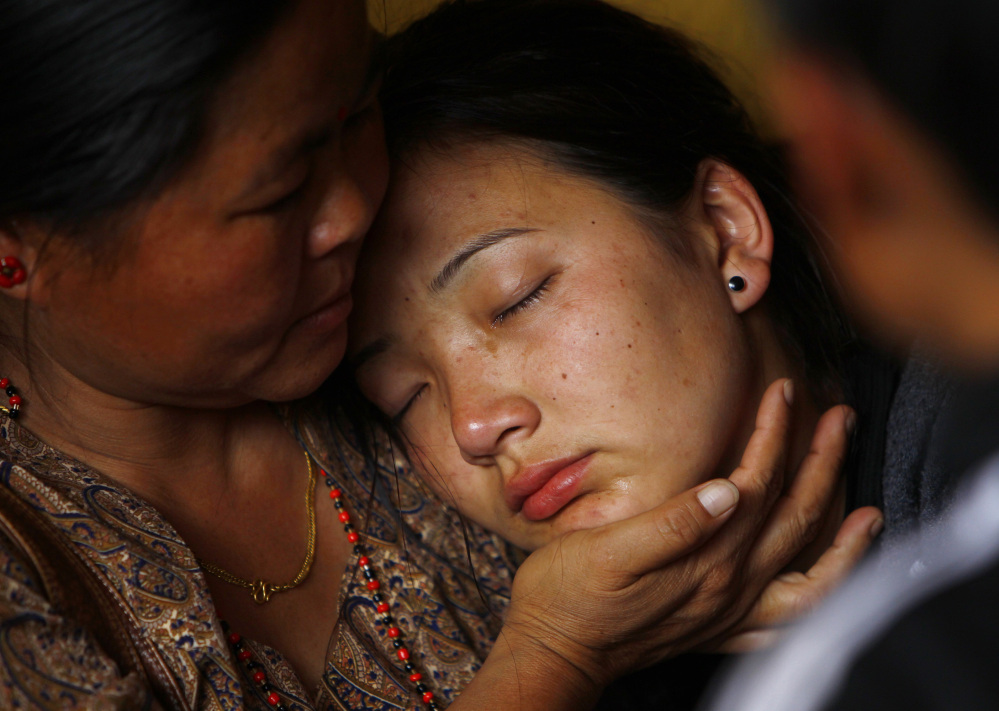KATMANDU, Nepal — Search teams recovered a 13th body Saturday from the snow and ice covering a dangerous climbing pass on Mount Everest, where an avalanche a day earlier swept over a group of Sherpa guides in the deadliest disaster on the world’s highest peak.
Another three guides remained missing, and searchers were working quickly to find them in case weather conditions deteriorated, said Maddhu Sunan Burlakoti, head of the Nepalese government’s mountaineering department. But the painstaking effort involved testing the strength of newly fallen snow and using extra clamps, ropes and aluminum ladders to navigate the treacherous Khumbu icefall, a maze of immense ice chunks and crevasses.
The avalanche slammed into the guides at about 6:30 a.m. Friday near the “popcorn field,” a section of the Khumbu known for its bulging chunks of ice. The 25 Sherpa guides were among the first people to make their way up the mountain this climbing season. They were hauling gear to the higher camps that their foreign clients would use in attempting to reach the summit next month.
One of the survivors told his relatives that the path had been unstable just before the snow slide hit at an elevation near 19,000 feet. The area is considered particularly dangerous because of its steep slope and deep crevasses that cut through the snow and ice covering the pass year round.
As soon as the avalanche occurred, rescuers, guides and climbers rushed to help, and all other climbing was suspended.
Seven of the 12 bodies pulled out and brought down Friday were handed over to their families in the Everest region, while the other five were taken to Katmandu, Nepal’s capital.
Four survivors were conscious and being treated in the intensive care units of several Katmandu hospitals for broken ribs, fractured limbs, punctured lungs and skin abrasions, according to Dr. C.R. Pandey from Grande Hospital. Others were treated for less serious injuries at the Everest base camp.
Hundreds of climbers, guides and support crews had been at Everest’s base camp preparing to climb the 29,035-foot peak when weather conditions are most favorable next month. As with each year, the Sherpa guides from each of the expedition teams had been working together to prepare the path by carving routes through the ice, fixing ropes on the slopes and setting up camps at higher altitudes.
Copy the Story LinkSend questions/comments to the editors.



Success. Please wait for the page to reload. If the page does not reload within 5 seconds, please refresh the page.
Enter your email and password to access comments.
Hi, to comment on stories you must . This profile is in addition to your subscription and website login.
Already have a commenting profile? .
Invalid username/password.
Please check your email to confirm and complete your registration.
Only subscribers are eligible to post comments. Please subscribe or login first for digital access. Here’s why.
Use the form below to reset your password. When you've submitted your account email, we will send an email with a reset code.